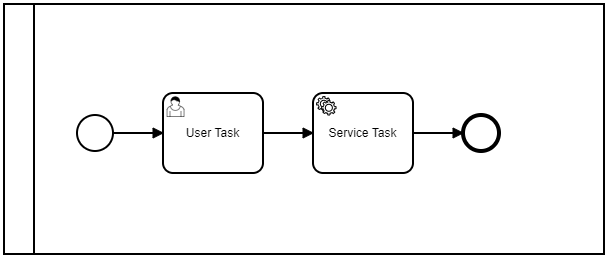I would know if I’m doing it right or if there’s a simpler way to do this. I re-explain it again.
What I want is a simple “Read data” -> “Elaborate data some way” -> “Show the result”.
For this, I created an User Task, Read, that is connected to a Service Task, Elaborate, that is connected to another User Task, Show.
In my concrete implementation, I want simply to sum two numbers and see the result.
In Spring Boot I created the AddNumbersController, that maps the /start URI that simply start the process by key (well, I could generalize it in a ProcessController in a “/start/{key}/{redirectPath}” mapping… well, I’ll do it later).
After starting the process, the page will redirect to a form. When the form is submitted, Add2NumbersController.submit() is invoked. The form data are added to the process variables with runtimeService.setVariable(processId, variableName, variableValue).
Next I query the db for getting Read by key:
public Task getByProcessIdAndTaskKey(String processId, String taskKey) {
final TaskQuery taskQuery = this.taskService.createTaskQuery();
return taskQuery
.processInstanceId(processId)
.taskDefinitionKey(taskKey)
.active()
.singleResult();
}
Well, for example, I don’t know if this is the smarter way to do the thing… in theory I should know in some way the current task. I should not query it by key explicitly. No?
Anyway, after that I complete the Read task. This way Elaborate should start. It is linked with an expression to demoTaskService.addNumbers(String processId), that cycle over all process variables, converts them to double and then to BigDecimal and sums them. Yes, there are only two numbers but this way you can add also N numbers in future if you want. Ok, now I’m thinking that is better to put all the numbers to add inside a single Collection process variable…
Anyway, after summing all the numbers, I put the result in a process variable. I do not need to complete the task manually I suppose, since it’s a Service Task, so I didn’t do it.
Next, Show task starts. It has an Execution Listener that at task start fires the expression demoTaskService.showAddNumbersResult(), that redirects to AddNumbersController.showAddNumbersResult(), that gets the result variable, put it on the model and redirect to the HTML template that shows the result. End.
I mean, this simple task musy be done in such a complicated way? Or am I wronging something?
